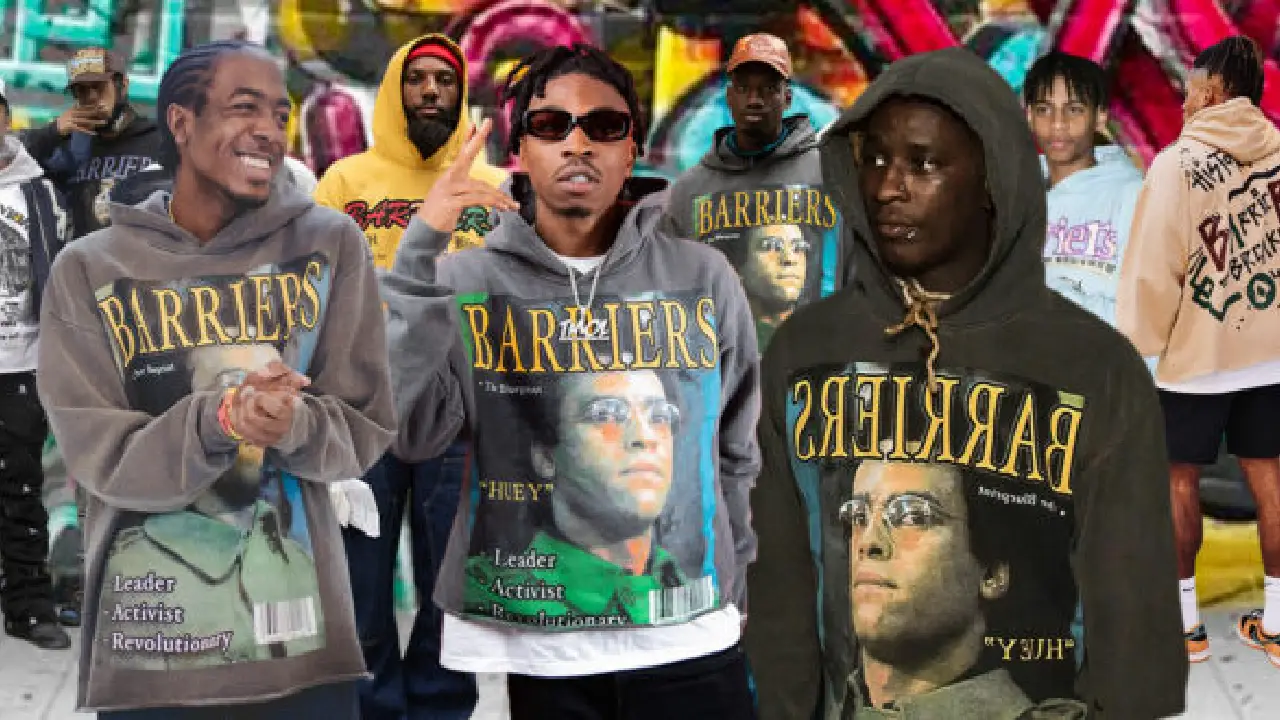Breaking Down Barriers: The Evolution of Clothing
by admin

Clothing has always been more than just a way to cover our bodies. It’s a cultural statement, a form of expression, and at times, a barrier that separates or unites individuals and societies. Throughout history, clothing has evolved significantly, not only in terms of style and fashion but also in its ability to shape perceptions and interactions. This article delves into the various roles clothing plays as both a barrier and a bridge, highlighting its impact on identity, social dynamics, and cultural exchange.
The Historical Perspective
From ancient civilizations to modern societies, Barriers Clothing has served multiple purposes beyond mere protection from the elements. In early human history, clothing was primarily functional, designed to keep individuals warm and protected from the environment. However, even in its simplest forms, clothing also served as a marker of social status and identity. In ancient Egypt, for example, elaborate garments and jewelry distinguished the wealthy from the common people, reinforcing social hierarchies and signaling power and prestige.
As societies evolved, so did the complexity and significance of clothing. The medieval period in Europe saw the rise of sumptuary laws, which regulated the types of clothing individuals could wear based on their social class or rank. These laws reinforced social distinctions and restricted upward mobility, serving as literal barriers to social advancement.
Clothing as a Cultural Marker
Beyond social distinctions, clothing has always been a powerful cultural marker. Traditional clothing, such as the kimono in Japan or the saree in India, not only reflects cultural heritage but also serves as a barrier preserving cultural identity amidst globalization. These garments are more than just fabric; they embody centuries of tradition, values, and craftsmanship, acting as a visible barrier against cultural homogenization.
Conversely, clothing can also act as a bridge between cultures. The fusion of traditional and modern elements in contemporary fashion illustrates how clothing can facilitate cultural exchange and understanding. Designers often blend diverse influences to create innovative styles that transcend geographical boundaries, challenging traditional barriers and fostering a more interconnected global society.
Gender and Identity
Barriers Hoodie also plays a pivotal role in defining and expressing gender identity. Throughout history, societal norms have dictated what constitutes appropriate attire for men and women, creating rigid barriers that reinforce gender roles. However, contemporary fashion has increasingly challenged these norms, with gender-neutral and non-conforming clothing styles gaining popularity. This shift not only breaks down traditional barriers but also empowers individuals to express their identities authentically.
The Psychological Impact
Beyond its outward manifestations, clothing also influences our internal perceptions and behaviors. Psychological studies have shown that clothing can affect self-perception, confidence levels, and even cognitive processes. The phenomenon known as “enclothed cognition” suggests that what we wear can influence our thoughts and behaviors, acting as an invisible barrier that shapes our interactions with the world.
Fashion as a Tool for Change
In recent years, clothing has emerged as a powerful tool for social and environmental change. The rise of sustainable fashion movements aims to break down barriers to environmental degradation caused by the fast fashion industry. Additionally, initiatives promoting ethical labor practices seek to dismantle barriers to exploitation and inequality within the global supply chain.
Conclusion
From ancient times to the modern era, clothing has served as both a barrier and a bridge, shaping identities, social dynamics, and cultural exchanges. While clothing continues to evolve in response to changing societal norms and technological advancements, its fundamental role as a form of expression and cultural artifact remains unchanged. By understanding and appreciating the complex roles clothing plays, we can better navigate its barriers and harness its potential to unite and empower individuals and societies worldwide.
Clothing has always been more than just a way to cover our bodies. It’s a cultural statement, a form of expression, and at times, a barrier that separates or unites individuals and societies. Throughout history, clothing has evolved significantly, not only in terms of style and fashion but also in its ability to shape perceptions…
Recent Posts
- Central Cee Clothing: A New Wave of Urban Fashion
- New Rock Shoes: A Fusion of Style, Comfort, and Quality
- Warren Lotas Shirt Clothing: Blending Streetwear with Artistic Edge
- Exploring Mikuta Shop: A Unique Approach to Clothing
- Vale Forever Hoodie Clothing: A Blend of Streetwear and Artistic Expression